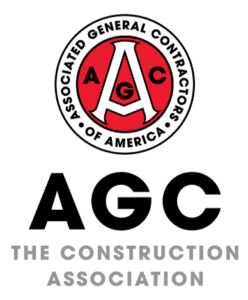WIDESPREAD STEEP INCREASES IN MATERIALS COSTS IN NOVEMBER OUTRUN PRICES FOR CONSTRUCTION PROJECTS, ADDING TO SQUEEZE ON CONTRACTORS’ MARGINS
[DEC 14]
Construction Officials Say Efforts to Address Supply Chain Challenges Have been Insufficient, Urge Public Officials to Do More to Alleviate Shipping Backups, Lower Tariffs and Address Growing Price Inflation
Prices of numerous construction materials soared again in November, outpacing the rate at which contractors raised their bid prices, according to an analysis by the Associated General Contractors of America of government data released today. Association officials said the current steps being taken to address supply chain problems and rising prices have been insufficient and urged public officials to redouble their efforts.
“Prices for nearly every type of construction material are rising at runaway rates,” said Ken Simonson, the association’s chief economist. “These costs are compounding the difficulties contractors are experiencing from long lead times for production, gridlocked supply chains, and record numbers of job openings.”
The producer price index for inputs to new nonresidential construction—the prices charged by goods producers and service providers such as distributors and transportation firms–jumped 0.9 percent in November and 22.1 percent over 12 months. Those increases dwarfed the rise in the index for new nonresidential construction—a measure of what contractors say they would charge to erect five types of nonresidential buildings, Simonson noted. That index climbed by 0.3 percent for the month and 12.4 percent from a year earlier.
A wide range of products used in construction, as well as trucking services, posted double-digit price increases over the past 12 months, Simonson observed. The price index for steel mill products more than doubled, soaring 141.6 percent since November 2020. The index for aluminum mill shapes jumped 41.1 percent over 12 months, while the index for copper and brass mill shapes rose 37.8 percent. The index for plastic construction products climbed by 32.5 percent. The index for gypsum products such as wallboard rose 20.9 percent and insulation costs increased 17.4 percent.
Trucking costs climbed 16.3 percent, as did the index for asphalt felts and coatings. The index for architectural coatings increased 12.4 percent and the index for lumber and plywood rose 12.2 percent. The index for diesel fuel, which contractors buy directly for their own vehicles and off-road equipment and also indirectly through surcharges on deliveries of materials and equipment, soared 81 percent over 12 months despite a 2.9 percent decline from October.
Association officials said the steep rise in materials prices shows that more needs to be done to tackle supply chain issues and price inflation that are making it difficult for contractors to be successful. They urged public officials to look at ways to temporarily increase capacity at backed up ports like Los Angeles/Long Beach, abandon plans to double tariffs on Canadian wood, and address rising levels of inflation.
“Rising materials prices are squeezing already slim profit margins for many contractors,” said Stephen E. Sandherr, the association’s chief executive officer. “Having strong demand for construction is important, being able to make a small amount of money on that work is vital.”
View producer price index data. View chart of gap between input costs and bid prices.
CONTACT: Brian Turmail
(703) 459-0238, brian.turmail@agc.org
